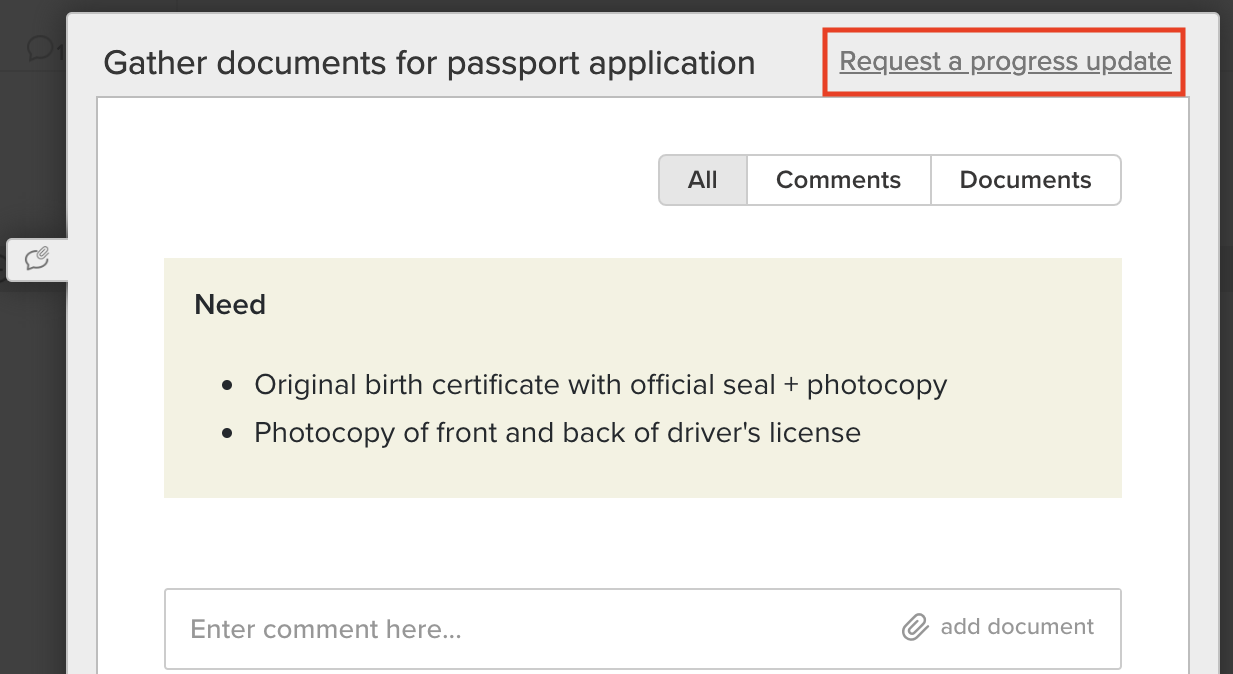Project Management Best Practice Guide
What are project management best practices?
You wouldn’t be here now if you weren’t looking to be the best project manager you can be. So we thought we’d make your job a little easier by curating a list of our favorite project management tips and techniques, with some templates and examples to get you started!
Here are 13 best practices for project management we recommend.
- Document project requirements
- Avoid estimating projects in a vacuum
- Use a project brief to get stakeholder buy-in
- Establish a clear project plan
- Mind your team’s workload
- Clarify project roles and responsibilities
- Communicate early and often
- Monitor task progress
- Manage risk
- Keep scope creep in check
- Conduct a project post-mortem
- Iterate on your process
- Develop leadership skills
Lay a clear path to success with a visual plan that’s easy to understand, and keep everyone in sync with flexible workflows and team collaboration.

1. Document project requirements
Want project stakeholders to feel peachy about the project’s final outcome? Document all the features, functions, and tasks that must be completed to tie a big red bow around your project. That way you can put a plan in place that ensures project goals get met. Use this free template to capture project requirements.
2. Avoid estimating projects in a vacuum
Project estimation can feel like one big guessing game. But it doesn’t have to. Lean on these 3 resources to help you estimate projects more accurately.
- Work breakdown structure: A work breakdown structure is a common method used to estimate projects. You basically itemize all the tasks and subtasks needed to get a project done. See work breakdown structure best practices and examples.
- Past projects: History can tell you a lot about how much time and effort it actually took to get a similar project across the finish line. So why not let past experience guide your project estimates? In TeamGantt, you can compare planned vs. actual timelines on previous projects with baselines.

- Your team: Let your team weigh in on project estimates to be sure you’re being realistic about the time it will take to get the job done. After all, they’ll be the ones doing the work!
3. Use a project brief to get stakeholder buy-in
A project brief acts as an agreement with your stakeholders on project objectives, scope, deliverables, milestones, timing, activities, process, and even resources needed to deliver your product. Use it to set clear expectations and gain buy-in on the front end and to help prevent scope creep and guide decisions once the project launches. This project brief template is a great place to start.
4. Establish a clear project plan
Building a solid plan is probably the most important thing you do as a project manager because it maps out the steps everyone needs to take to bring the project home on time and on budget. Here are a few quick tips we recommend:
- Organize your project into clear phases or task groups so your plan is easy for anyone to read.
- Add milestones to call attention to major dates, approvals, deliverables, or meetings.
- Create dependencies between tasks that need to happen in a specific order.
- Use TeamGantt’s sticky note feature to communicate important task details, like scope and/or roles and responsibilities.

5. Mind your team’s workload
Your project will lose momentum fast if your team is overloaded with too many tasks, and that can put you at risk of missing important deadlines. Before you set your plan in stone, be sure you’ve taken the full resource allocation picture into account. In TeamGantt, you can check team availability before assigning tasks to be sure you’re not adding work to an already full plate.

6. Clarify project roles and responsibilities
Complex projects can get confusing quickly, so it’s important to lay out who’s doing what, preferably for each project task. That’s where a RACI chart comes in. This simple matrix enables you to assign the following roles and responsibilities:
- Responsible
- Accountable
- Consulted
- Informed
7. Communicate early and often
Good communication is the heart and soul of any successful project. As the project manager, it’s your job to facilitate communication every step of the way. You also need to be prepared to raise a flag at the first whiff of trouble, even if it means a tough conversation.
Here are 2 project management resources you can use to keep information flowing effectively:
- Communication plan: A communication plan enables you to set clear guidelines for how and when information will be shared—and who’s responsible—so everyone knows what to expect.
- Project status report: A status report provides a regular touchpoint for all of your project’s moving parts. Use this status report template to update your team and stakeholders on project progress, budget, issues, and action items.
In TeamGantt, your team can stay in sync by posting task updates and uploading project files to the Discussion tab.

8. Monitor task progress
Project management is not a set-it-and-forget-it business. You’ve got to be the eyes on the prize, making sure everything progresses according to plan.
TeamGantt’s Project Health Report gives you a quick snapshot of all your projects so you can see what’s running on schedule, what’s falling behind, and what’s already overdue. That way you can shore up the gaps and adjust the plan to ensure your project still hits the mark.

If a task is running behind or has already missed the deadline, simply click Request progress update at the top of the task edit window to send the person assigned to the task a friendly reminder to update their progress.

9. Manage risk
Every project comes with risk. The trick is to get ahead of it so you can formulate a plan for mitigating it. A risk assessment matrix enables you to identify all the things that could go wrong and calculate the potential damage. That makes it easy to prioritize issues and take action where it’s needed most to keep your project on course.
10. Keep scope creep in check
Every project has constraints. If project scope gets out of hand, your budget and timeline will feel the pinch. Keep your project brief close so you can refer stakeholders back to the original scope if new requests pop up after a project’s underway. An honest chat about trade-offs can go a long way in taming scope creep. If the scope does shift, update the project plan and communicate the changes to everyone on the project.
11. Conduct a project post-mortem
When a project crosses the finish line, it’s easy to jump right into the next one without ever looking back. But taking time to discuss what went well and what didn’t with your team can help you tackle issues together and uncover opportunities to make that project life better for everyone. Capture all your ideas and action items with this project post-mortem meeting template.
12. Iterate on your process
A process that fits like a bad suit can keep your team from reaching its full project potential. So pay attention to how work gets done, and experiment with your process until you and your team hit your stride. Agile may work well for some projects, while others thrive on Waterfall.
If all else fails, forge your own process path with a hybrid project management approach. Here’s an example of how you might use a gantt chart to run an Agile sprint.

13. Develop leadership skills
As a project manager, technical chops matter—but leadership skills really make you shine. Look for opportunities to grow as a leader so you can gain positive influence and set a solid foundation of trust among your team and stakeholders.

Implementing project management best practices
With these project management best practices under your belt, you’re ready to grab projects by the horn and steer them to success. 💪
Of course, you don’t have to wrangle it all on your own.
With TeamGantt, you can plan, track, and manage every project with ease. Watch the video below to see how TeamGantt works, and give our online project management software a free try today!





